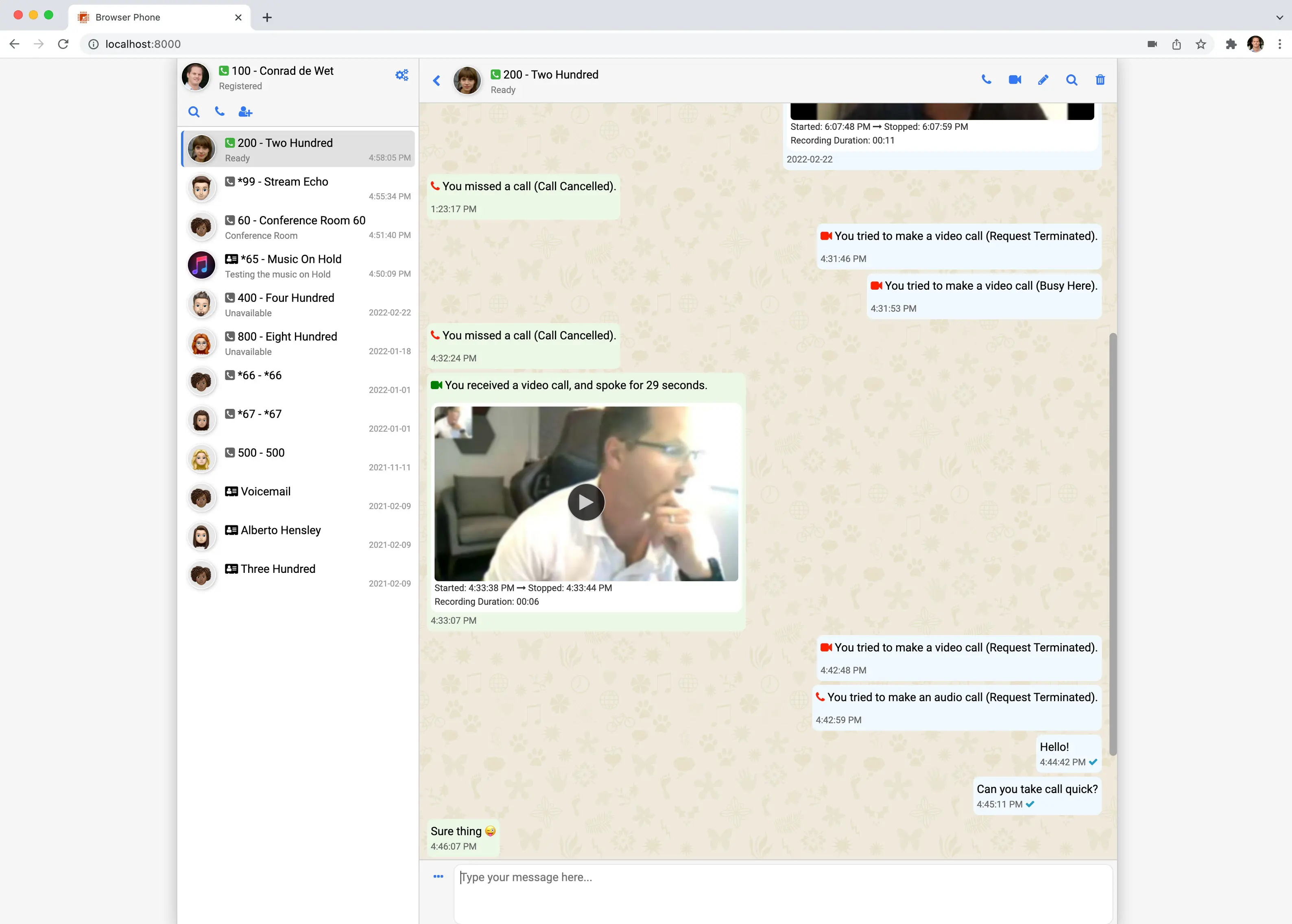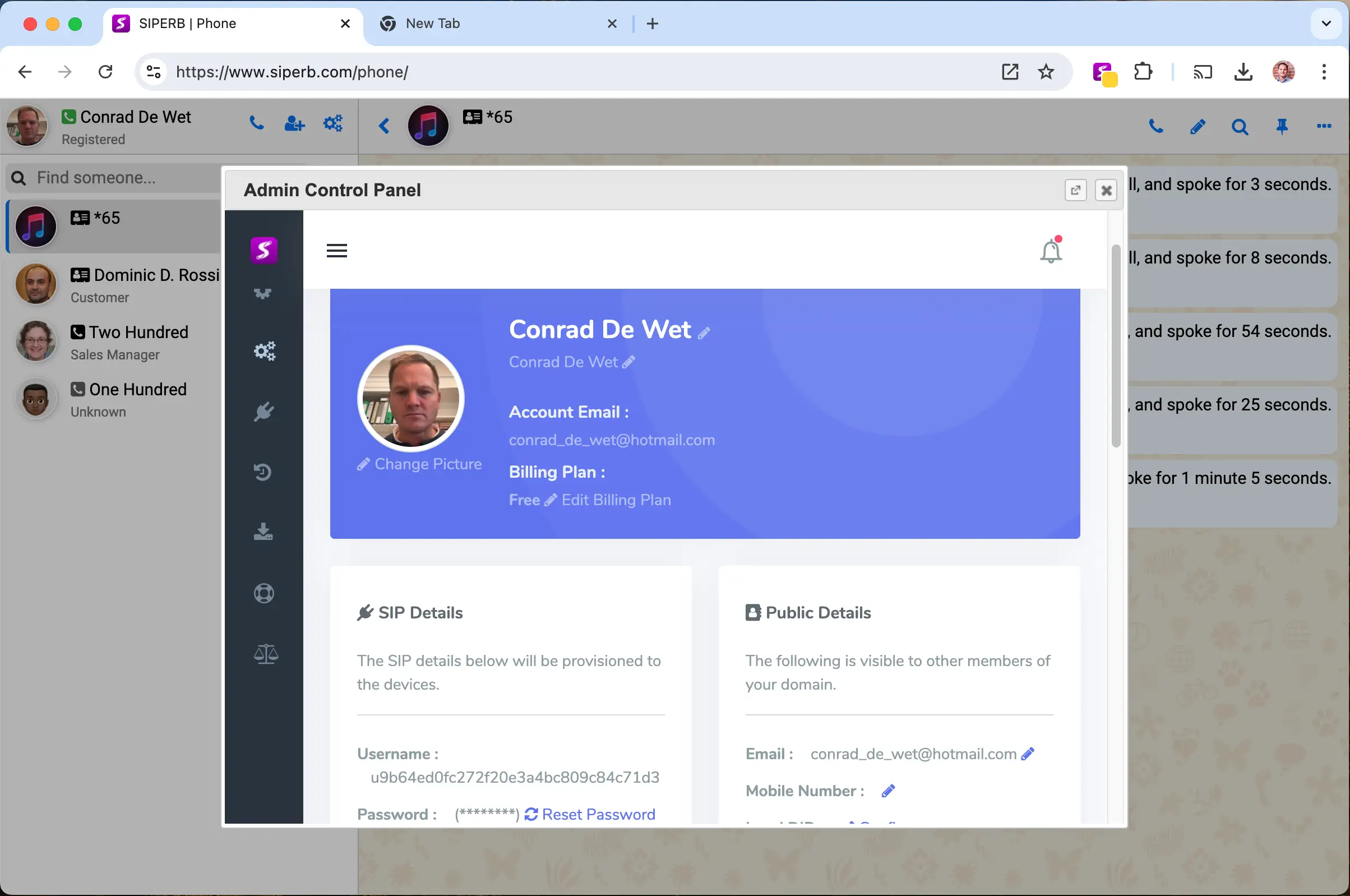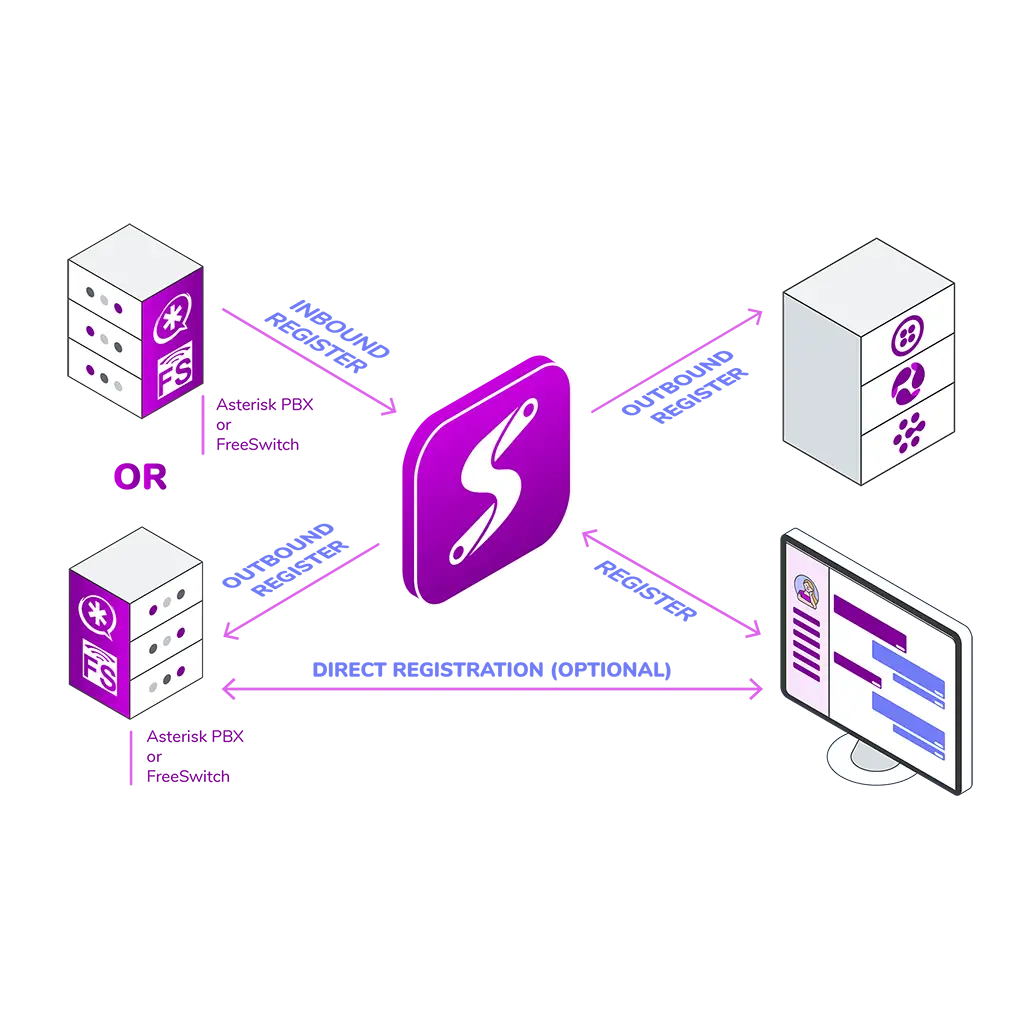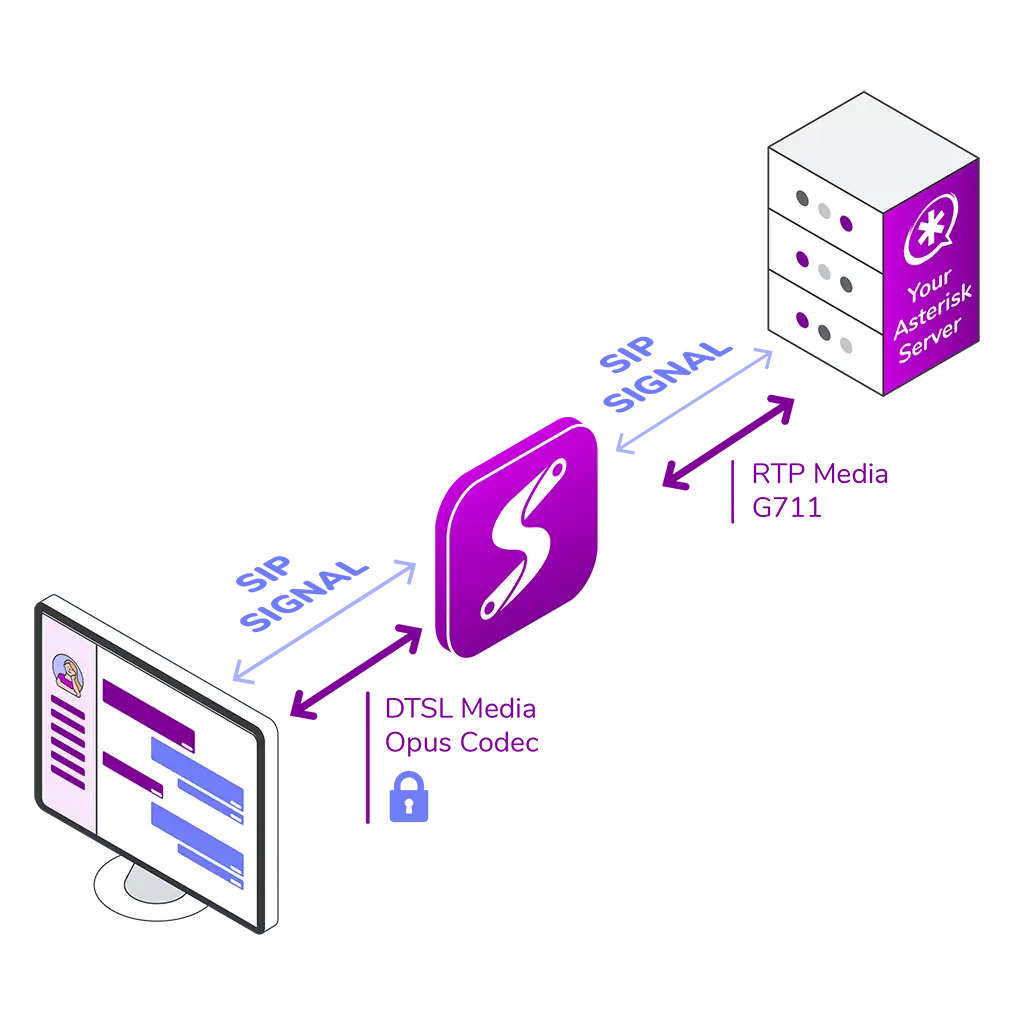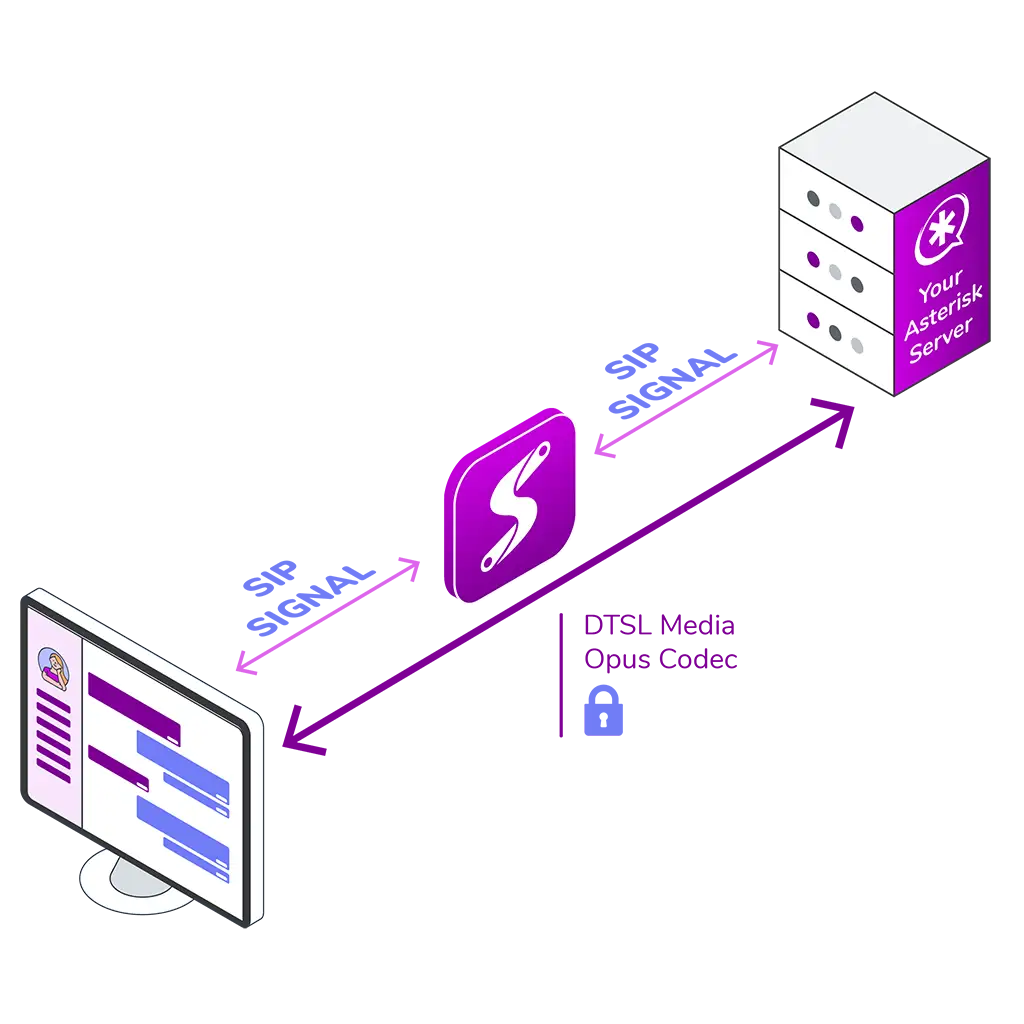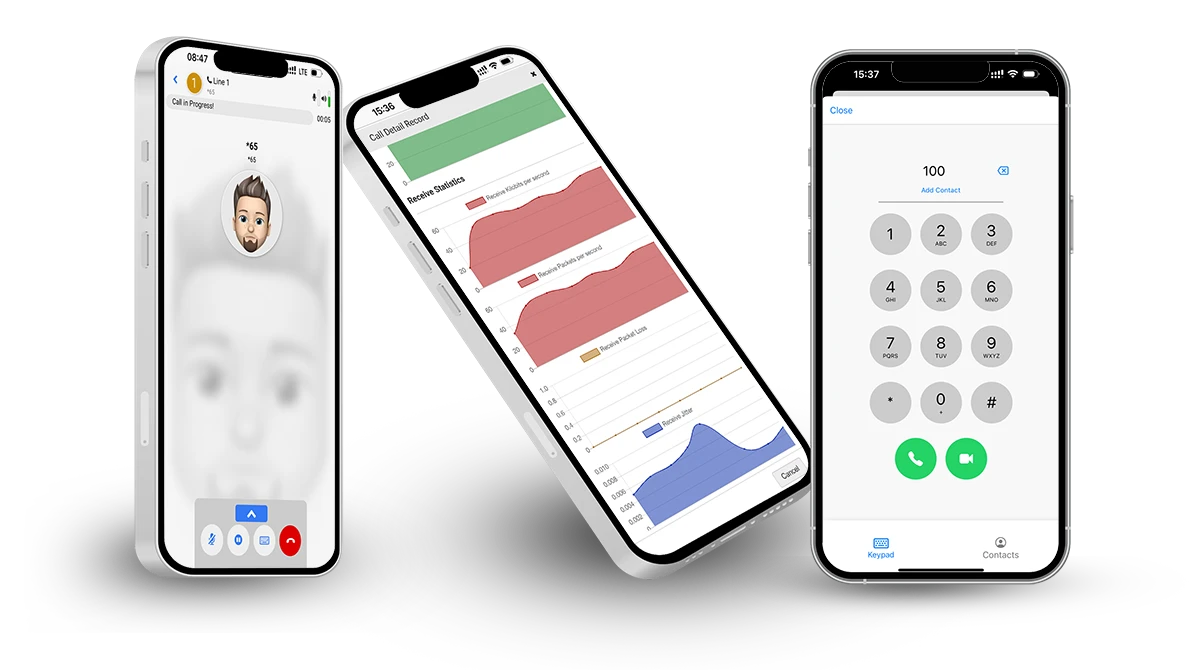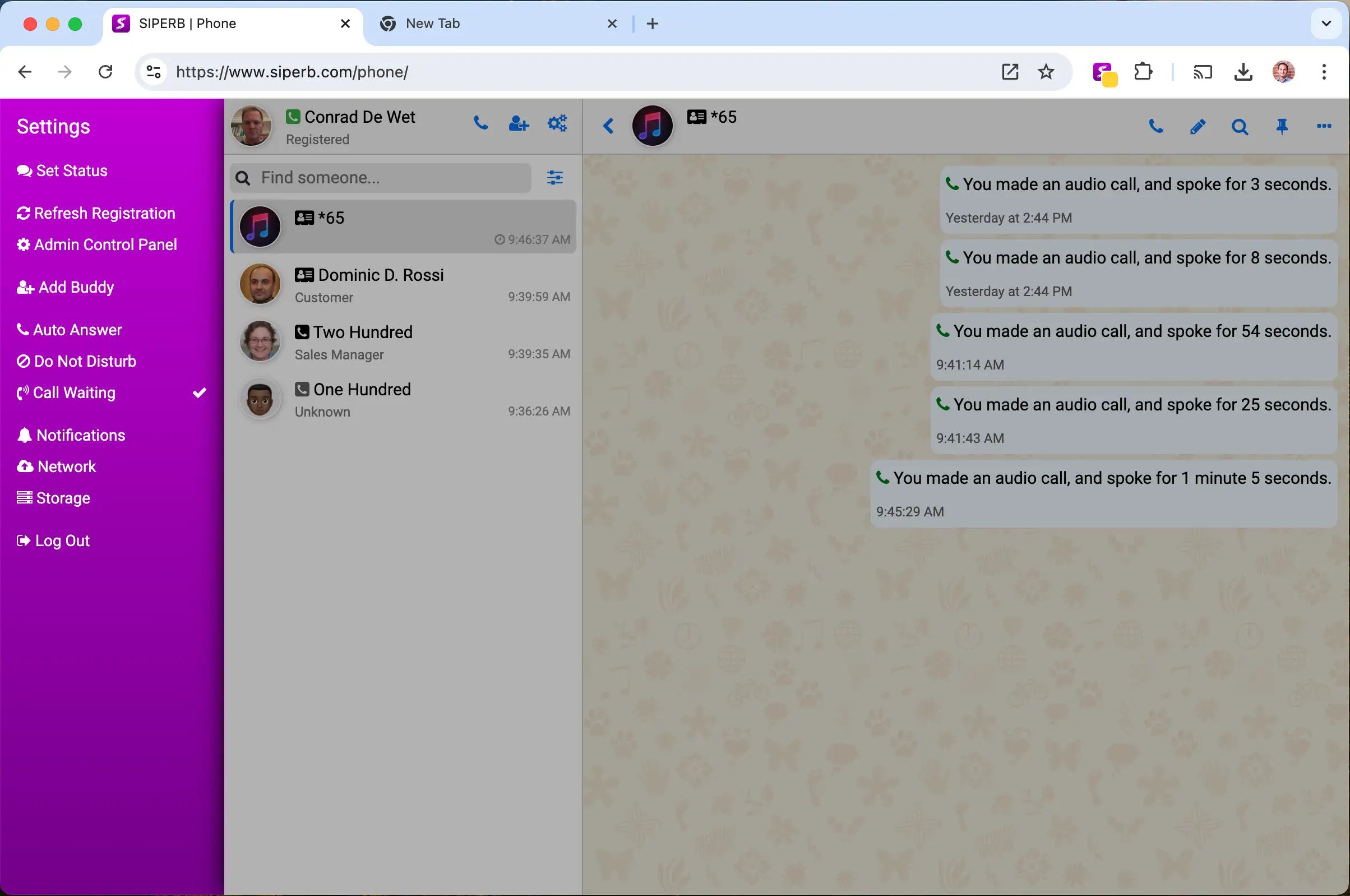A modern Softphone powered by WebRTC for Asterisk, FreeSWITCH or any SIP/VOIP PBX.
SIPERB is a Softphone that connects your users to your PBX or even your ISP. We provide a free, hosted WebRTC to SIP Proxy to enable WebRTC calling on your traditional PBX. Your Asterisk PBX may not be WebRTC ready, or it may be, but you lack the Browser Phone required to make use of WebRTC, or you may just want more of the features that Siperb offers. Either way, Siperb can provide this for you. Watch Video



